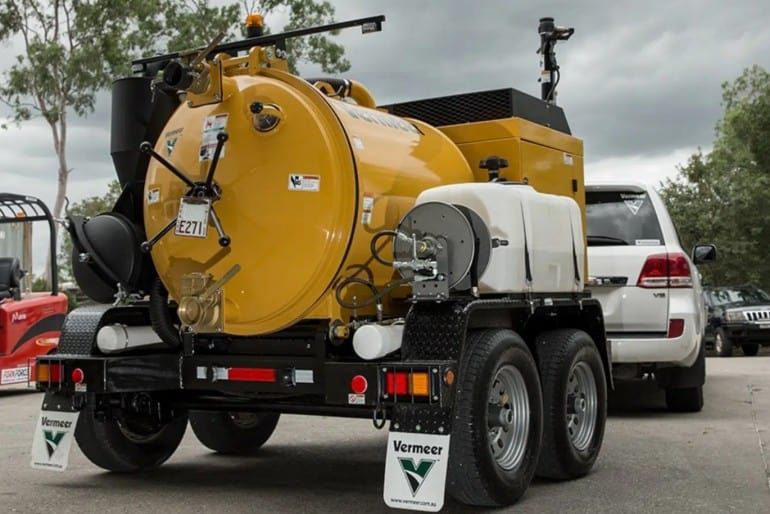
What is Vacuum Excavation?
Vacuum excavation is a non-destructive digging or excavation method used to safely uncover underground utilities and infrastructure.
It involves the use of a vacuum excavator, which is a specialised piece of equipment designed to remove soil and debris from the ground while simultaneously creating a hole or trench.
The key principle of vacuum excavation is to use powerful suction to break up and remove soil and other materials, exposing the buried utilities without causing damage to them.
Two Primary Methods
Air Vacuum Excavation:
In this method, compressed air is used to loosen and break up the soil, and a high-powered vacuum system sucks up the loosened material. The soil and debris are then separated, with the soil being collected for disposal and the debris typically being filtered out. This method is useful in areas with soft or loose soils.
Hydro Vacuum Excavation:
Water is used to create a slurry by injecting it into the ground, which softens the soil and makes it easier to excavate. Simultaneously, a vacuum system removes the slurry and soil, and a separation process is used to filter out the water from the soil and debris. Hydro excavation is often preferred in areas with harder or compacted soils and in situations where the presence of water is not a concern.
Common Applications
Vacuum excavation is commonly used in various applications, including:
- Locating and exposing underground utilities such as water pipes, gas lines, fiber optic cables, and electrical conduits before digging or construction to prevent accidental damage.
- Cleaning out catch basins, manholes, and other underground infrastructure.
- Digging small to medium-sized holes or trenches for utility installations or repairs in a controlled and precise manner.
- Archaeological excavations where delicate artifacts need to be preserved.
Advantages of Vacuum Excavation
One of the primary advantages is its ability to minimize the risk of damage to buried utilities, which can result in costly repairs and potential safety hazards.
It is considered a safer and more environmentally friendly alternative to traditional excavation methods like backhoes or trenchers, particularly in areas with congested underground infrastructure.
Back to FAQBack to FAQ